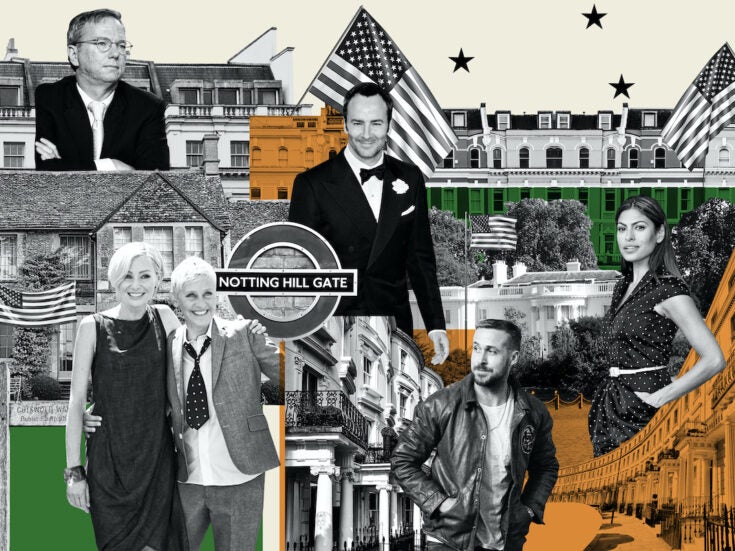
Private members’ clubs used to be the domain of the male establishment. Not any more, writes Lucia van der Post
If there is a more potent symbol of how much the old social order has changed than the world of clubs, it’s hard to think of what it might be.
It’s not all that long ago that clubs were mostly for ‘gentlemen’ and played a hugely important role in the lives of their members. When they were up ‘in town’, members would drop regularly into their clubs for breakfast or lunch, and if they didn’t have a townhouse they could stay overnight in what were mostly rather spartan bedrooms. They
were closed, masculine worlds with archaic rules and dress codes. Above all, they were a world in which women scarcely ever set foot.
The first to break the mould was almost certainly the Groucho Club (named after Groucho Marx’s famous statement that ‘I wouldn’t want to belong to any club that would have me as a member’), started in the Eighties by a group of (mostly women) publishers in revolt against the stuffiness of the traditional gentlemen’s club. It was clearly aimed at the world of arts, literature and media. Still today it has a slightly raffish, bohemian air.
Next up to see just how far clubs had lagged behind social changes was Nick Jones with Soho House, which opened in Greek Street in 1995. He, too, had a much artier clientele in mind – those working in television, the theatre, entertainment – for he’d perceived that these people had money, were sociable, entertaining and needed places to gather. And just as important as those he let in were these he kept out – bankers, lawyers, politicians. The no corporate attire rule was strictly enforced; ties were discouraged. But otherwise rules were relaxed – food could be eaten whenever the members felt like it. The formal furnishings of the traditional male establishment went out. In came wooden floorboards, comfy sofas, a slightly shabby/chic air of relaxed informality.

London’s two other clubs catering to the creative worlds – the Dover Street Arts Club and the Chelsea Arts Club – were both at the time rather run down. Since Soho House’s arrival, both have upped their game.
The Dover Street Arts Club’s membership had allegedly slipped to about 500 by the time new owner, Brian Clivaz, bought it, revamped it and in 2012 reopened it as one of the glossiest of all modern-day clubs. But rather than the penniless creative so beloved of Soho House, Clivaz had his eye on vastly rich patrons of the arts. ‘What we want are hedgies who in their spare time will fork out £120 million for The Scream,’ he told the Spectator.
One must not, of course, forget that Annabel’s and the rest of the late Mark Birley’s clutch of high-end clubs were catering to the aristocratic and moneyed social set but were mostly traditional – though very elegantly so – in tone. The Chelsea Arts Club is less glossy but has a devoted fan base of creative types who love its garden, its programme of events, its Bohemian air.
But Soho House was catering to a very different breed, and its brand and its ethos spread around the world. Today there are 19 distinctly idiosyncratic Soho House clubs, with several more scheduled to open this year. In many places it clearly met a need that nobody had spotted before. Babington House, for example, redefined what luxury country house hotels might be like – there was no question of breakfast being over at 10 or even 11am, guests could come and go as they liked, eat what and when they liked, they could wander round in their spa dressing-gowns and loll about in the shabby-chic interiors that are its trademark.
Wherever they opened, they became the club everybody wanted to join. Here, for instance, is the Hollywood Reporter commenting on Soho House’s arrival in Los Angeles: ‘In a remarkably short time, Soho House has become the most important club in Hollywood – a high-wattage magnet for A-listers and dealmakers.’ Those who couldn’t get in were very miffed indeed, so let nobody think that all snobbery was abandoned when Soho House opened its doors – it was just snobbery of a very different kind.

But the world of today is very different from the mid-Nineties when Soho House first opened its doors. A whole raft of new-age clubs has begun to arise. In opening the Ned in the City, Jones at last embraced the fact that many in the City have what it calls ‘a creative soul’ as well a financial brain, and it caters for those who work in finance, tech, healthcare and media. Meanwhile, 5 Hertford Street is where you find the international moneyed set, who chiefly go for the food (which is wonderful), the networking and the sheer glamour of the place.
Otherwise the chief motivator for change in clubland is the hugely altering workplace and the rise of the freelance with no office to go to. Soho House has always made it clear that members can sit in their clubs all day long if they want to, nursing a glass of water or a cappuccino, and their laptop – only mobile phone usage is strictly limited. ‘Our favourite member,’ said Jones once, ‘is a struggling scriptwriter.’
Catering for the ever-increasing numbers of freelance workers – whether the aforementioned scriptwriters, PRs, novelists, actors or TV producers – is key. Visit any of the Soho House restaurants during the day and it is awash with singletons sitting at tables, their eyes locked on to their computers, and at lunchtime nobody is ordering
roast woodcock washed down with a bottle of claret.
WeWork opened in 2010 with the aim of building ‘more than beautiful, shared office spaces. We wanted to build a community. A place you join as an individual, “me”, but where you become part of a greater “we”. A place where we’re redefining success measured by personal fulfilment, not just the bottom line. Community is our catalyst.’ It offers office space, bicycle storage, food and drink of a simple but good kind, but more than that –it offers a community to the footloose freelance. There are social events and support services.
Then there’s Second Home, which describes itself as a ‘most creative community’ in which you can ‘grow your business in our beautiful collaborative workspaces’. It embraces the office-less worker who has need of support, friendship, physical space and it offers more than just support for the workplace – there are bookshops, coffee shops and cultural events.

In other words, this a very new community needing a home and the new-age clubs are supplying it.
On top of that, the search for a healthier lifestyle is the other driving force – not just behind Soho House but also behind the next generation of clubs. New-age food (healthy grains, roasted butternut squash, vegetarian meals) proliferates.
Even Annabel’s has felt obliged to add a vast new spa to its establishment while Equinox,
which started out as a gym brand, is moving into what it calls a ‘360° wellness experience’. It is branching out into hotels, targeting the same guests who are members at their fitness clubs, and the hotels (which will be open to the public, but members will get special rates) will aim to help their members follow a healthy regime of clean food and fitness while on the move.
For punters looking for like-minded souls with whom to bond, the choice of clubs is now proliferating so fast that somewhere there is bound to be a club that will cater to even the most niche of interests.
Lucia van der Post is a freelancer writer for Spear’s and the founding editor of How To Spend It






